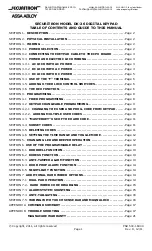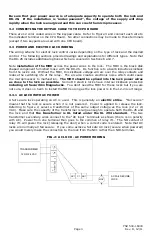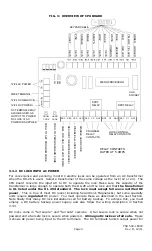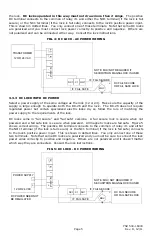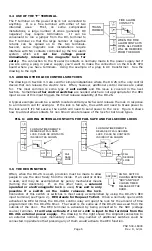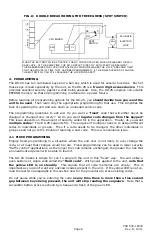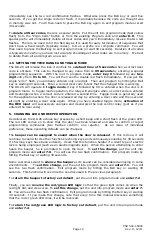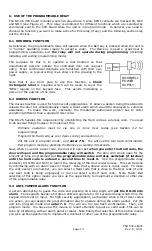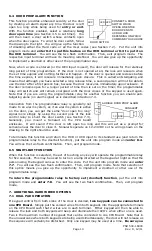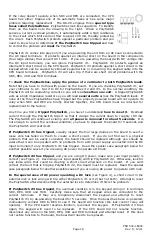
PN# 500-16900
Page 7
Rev. D, 12/11
There are some special characteristics as to how the REX input works. First, it does not start
the timer when the input is closed but rather when it reopens. This means that you can
use the REX input to release the door for an extended period of time. As long as terminals
REX and SRC remain connected, the lock will be released. When they disconnect, the lock will
remain released for the amount of time programmed. The REX input is also retriggerable.
This means that if the lock has been released and the REX input is triggered, the release time
will be extended to the full value that has been programmed.
When using exit switches, the possibility must be considered that an electronic failure may occur
to the DK-26 and a person will not be able to exit. If the DK-26 controls the only door
exiting the area, additional steps should be taken to improve the reliability of exiting
so as to avoid trapping someone. This can most easily be done by implementing a
secondary means of releasing the lock not dependent on the DK-26's REX input. Additional
switch contacts should be used which directly control the electric lock. In the case of a fail-safe
lock, which should always be employed when there is only one exit path, this can be easily
accomplished with "double break" wiring between the exit button, electric lock, and DK-26. If
the exit button has a set of normally open and normally closed contacts, it should then be wired
according to Figure 6. When the exit button is depressed, its normally closed contacts directly
break power to the lock while its normally open contacts activate the DK-26. In effect, the lock
is released twice. Note that the NC contacts are placed in the circuit before the DK-26's lock
control relay. This is to aid possible troubleshooting. It is usually easier to get to the DK-26
CPU board than to get to the push button wiring in a service situation. With wiring as shown in
Figure 6, the push button NC contacts can be metered on the DK-26 CPU board. If for any
reason a failure occurs with the DK-26, a person can still exit by holding the exit button down
while pushing the door open. Note, you should always consult your local building or fire
department when securing doors that are part on an emergency exit path to make
sure you are complying with local codes.
FIG. 7: DOUBLE BREAK WIRING FOR FREE EGRESS (TWO POLE SWITCH)
ELECTRIC
LOCK
MOV
CPU BOARD
NC
NC
NO
NO
WHEN THE EXIT SWITCH IS ACTIVATED, THE NC CONTACTS OPEN WHICH RELEASES THE FAIL
SAFE LOCK. AT THE SAME TIME, THE NO CONTACTS CLOSE WHICH ACTIVATES THE REX INPUT.
THIS DEENERGIZES THE LOCK CONTROL RELAY WHICH RELEASES THE LOCK "A SECOND TIME"
FOR THE AMOUNT OF TIME THAT HAS BEEN PROGRAMMED. IF THE DK-26 SUFFERS A FAILURE,
THE EXIT SWITCH CAN STILL RELEASE THE LOCK FOR SAFETY.
2 POLE
SWITCH
FAIL SAFE
SRC REX
NC1
C1
AC
IN
F
DC I
N
/O
U
T
+
+
Note that Figure 6 shows a DC fail safe lock (virtually all fail safe locks are DC). Power could
either be furnished by an AC transformer which would connect to the “AC IN” terminals or a DC
power supply which would connect to the “DC IN/OUT” terminals.
If you have an SPDT exit switch available to double break REX, the connection is shown in
Figure 7. The difference is that you don’t use the SRC terminal at all. The REX terminal is
triggered from the +DC terminal via the NO contact of the SPDT switch.
Summary of Contents for Securitron DK-26
Page 23: ......


